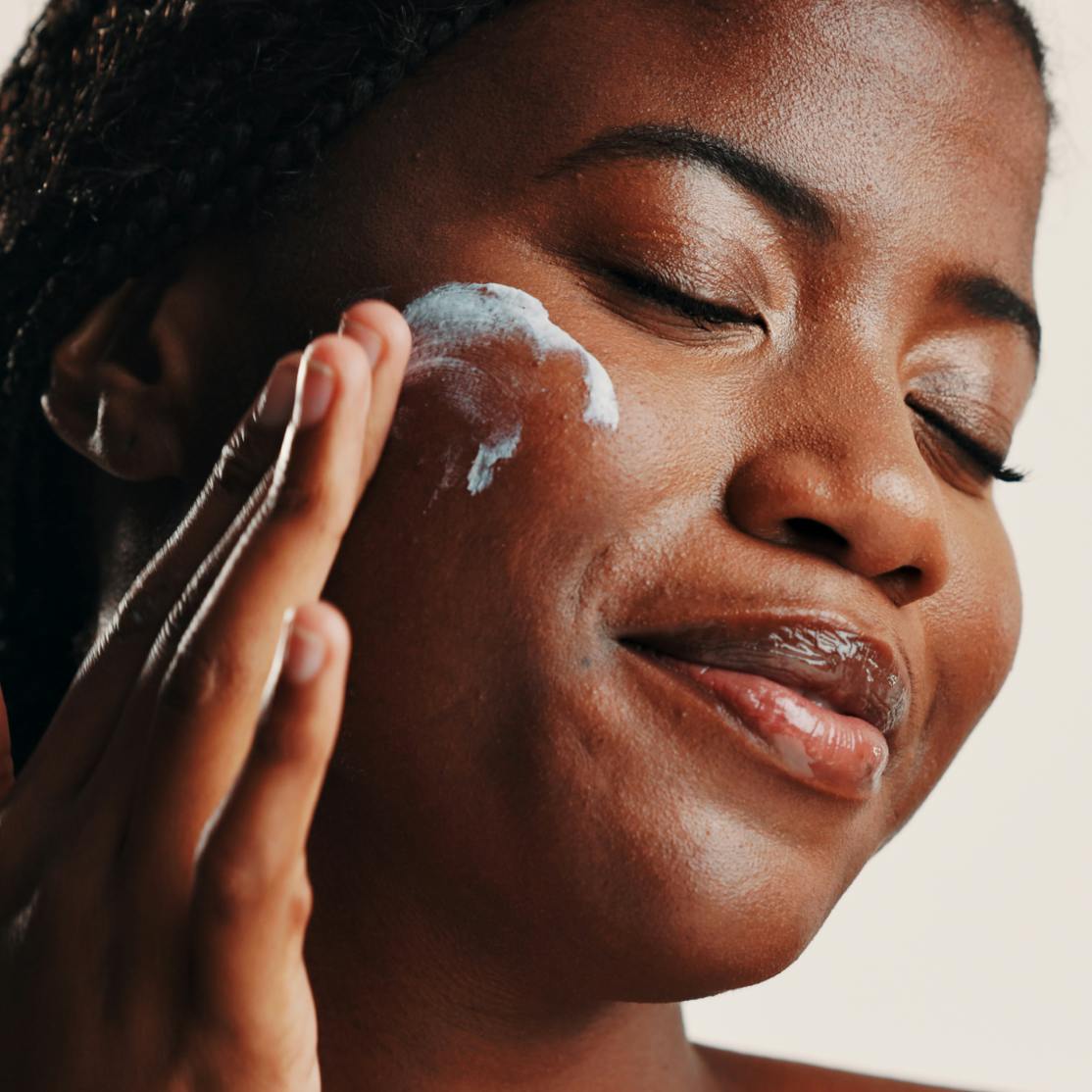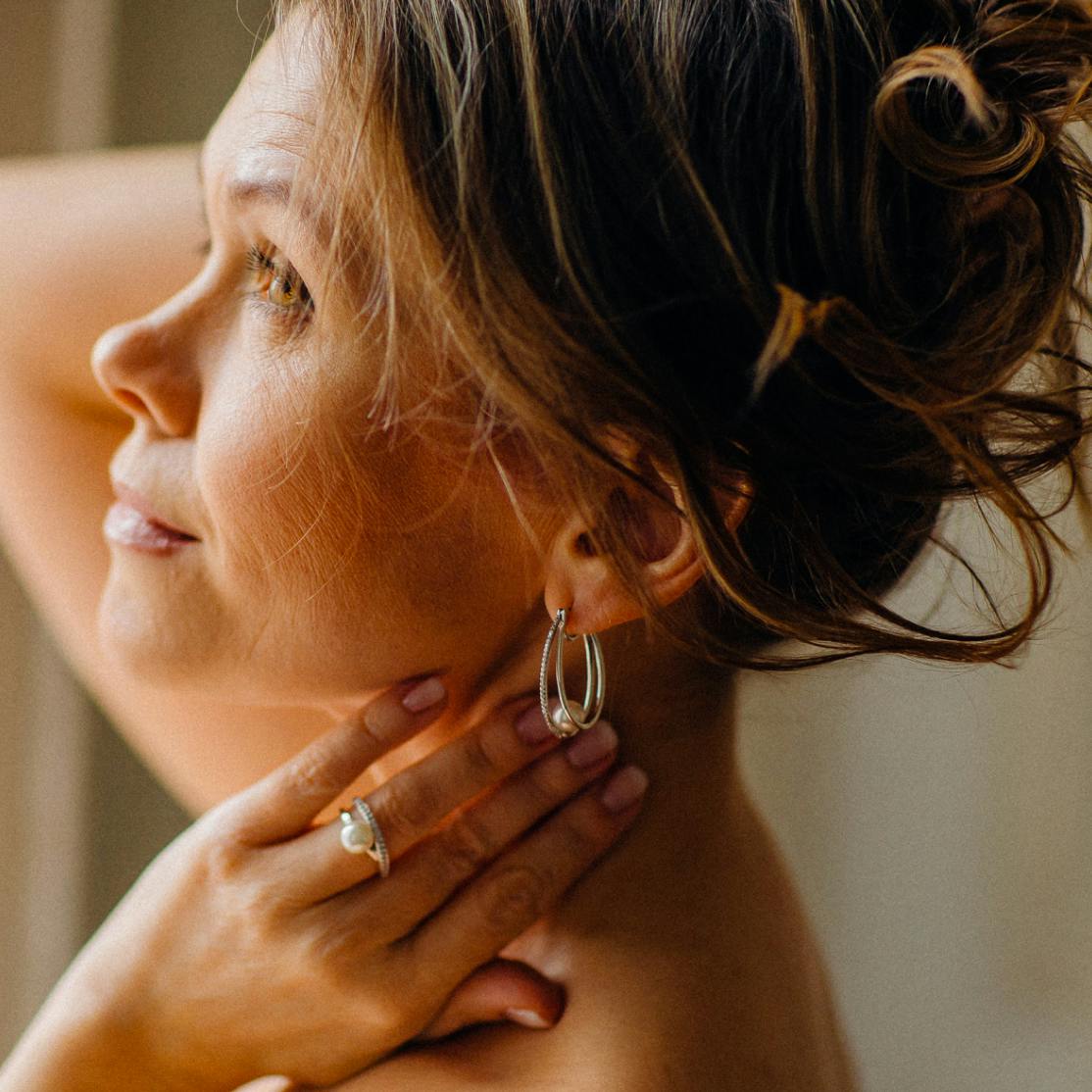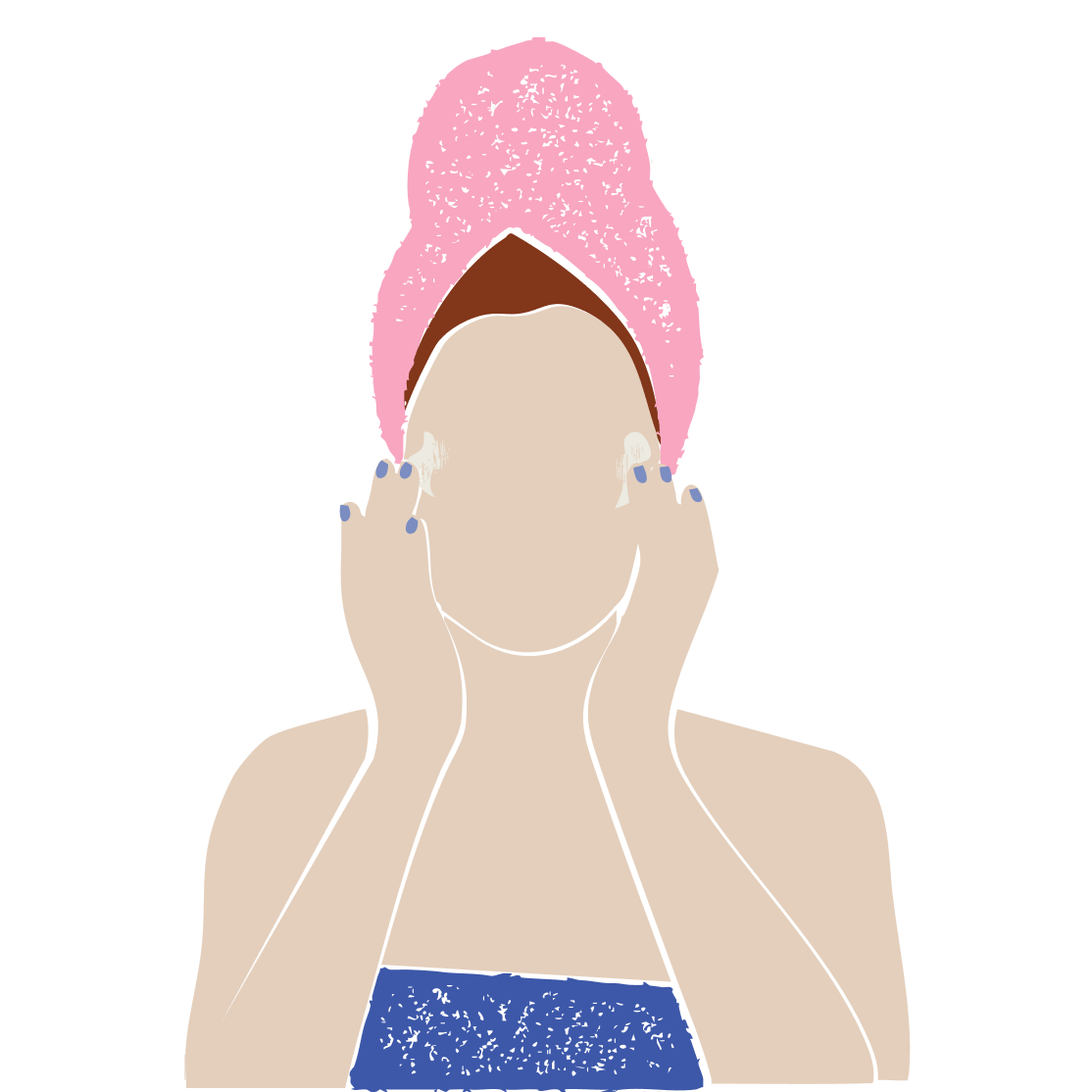Your 30s mark an exciting turning point—not just in life, but in how you approach skin care. As you age, your skin's needs evolve, making it essential to adjust your skin care routine accordingly. The key is being proactive rather than reactive, protecting your skin and preventing damage before major concerns develop. This means incorporating daily sunscreen and targeted active ingredients like retinol and antioxidants into your regimen. Whether you're looking for the best skin care routine in your 30s (40s, 50s, 60s, and beyond), starting smart antiaging habits early and adapting them through each decade will keep your complexion thriving and radiant at every stage of life.
Why focus on age-appropriate skin care? Because each decade is about prevention and implementing an effective skin care routine with good habits that will improve your complexion now and for years to come. The skin care routine you establish—daily sunscreen, skin-protecting antioxidants, collagen-boosting retinol—will pay it forward by helping preserve your collagen supply, prevent brown spots, and stave off deeper wrinkles. Whether you're starting in your 30s or adapting your routine in your 40s, 50s, 60s (and beyond), the right approach for your age can safeguard your skin for the future. You'll thank yourself later.
How Skin Changes in Your 30s
Decrease in collagen and elastin production
Collagen and elastin are the structural proteins in your skin that keep it firm and elastic. They are an essential part of your skin’s scaffolding. That’s why when they begin to diminish over time, skin loses laxity, and fine lines form. Not to get too Debbie Downer here, but research suggests that collagen and elastin begin to slowly decline as early as your mid-20s.
Increased appearance of fine lines and wrinkles
Cumulative sun exposure, repetitive movements (like raising your eyebrows or squinting), and the slow decline of collagen and elastin over time all contribute to visible signs of aging—namely, fine lines and wrinkles.
Uneven skin tone and hyperpigmentation
Those brown spots and dark patches that seem to pop up out of nowhere? They happen for all sorts of reasons—sun exposure, hormonal changes, breakouts, and even minor skin injuries. Here's what's going on: Your melanocytes (pigment-producing cells) create melanin as a protective response whenever your skin feels under attack. Think of tans, sunburns, and dark spots as your skin's way of throwing up a shield. Basically, anything that causes inflammation—whether it's a pimple, picking at your skin, harsh scrubbing, or even a small scratch—can trigger this pigment response.
Slower cell turnover leading to dull skin
Notice your skin looking a bit lackluster lately? That's likely due to a buildup of dead skin cells (called keratinocytes) hanging out on your skin's surface when they should have moved on. After age 30, your skin's natural shedding process starts to slow down, meaning those dead cells stick around longer and create a dull, tired-looking complexion.
The importance of proactive skin care to mitigate future skin damage
Think of skin care like investing in your future self—the earlier you start, the bigger the payoff. Just like you wouldn't wait until retirement age to start saving, getting ahead of skin aging in your 30s is all about playing the long game. The good habits you establish now (hello, daily sunscreen and targeted treatments) will pay serious dividends by the time you're 50 and beyond—helping keep your skin barrier strong, your face and neck firmer, and those deeper wrinkles at bay.

The Essential Skin Care Routine for Women in Their 30s
Morning Skin Care Routine
Gentle cleanser: Maintain skin barrier and hydration
Here's the thing about morning cleansing—you might not even need it. Since cleanser's main job is removing the day's buildup of oil, makeup, and grime, a simple water rinse in the a.m. often does the trick. If you're a morning face-wash person though, keep it gentle. The goal is cleaning without stripping away your skin's natural protective oils, so stick with something mild that won't leave your face feeling tight or squeaky clean.
Antioxidant serum (vitamin C): Protect against environmental stressors and improve brightness
Antioxidants are like your sunscreen's sidekick—they're the dynamic duo of daytime protection. While your SPF 30+ sunscreen blocks UV rays, antioxidants like vitamins C and E are busy neutralizing the free radicals that sneak through from sun exposure and pollution. These environmental troublemakers love to mess with your collagen and create dark spots, but a vitamin C serum applied under your daily moisturizer helps fight back. Plus, vitamin C gives you that extra glow and brightness—it's like having a personal bodyguard for your skin.
Hydrating moisturizer: Maintain moisture barrier and prevent fine lines
If you take away just one thing from this entire article, let it be this: Daily moisturizer with SPF 30+ is your ultimate antiaging secret weapon. Seriously, this one step does more heavy lifting than any expensive serum or treatment. It keeps your skin plump and hydrated with ingredients like hyaluronic acid and glycerin while protecting against the UV damage that causes pretty much every sign of aging you want to avoid. This step is nonnegotiable—it will pay off later.
Evening Skin Care Routine
Double-cleansing method
This two-step method is as satisfying as it is effective. Start with an oil-based or micellar cleanser to break down makeup, sunscreen, and the day's oil buildup (it's like using dish soap on greasy pans—oil dissolves oil). Then follow with your regular gentle face wash and lukewarm water to get everything squeaky clean, without the squeak.
Exfoliation
While you may have used old-school face scrubs in your teens and 20s, skin care in your 30s is about babying your barrier to protect it for the long run. To gently remove the buildup of dead cells that dull the complexion and clog pores, use nonscrubbing chemical exfoliating ingredients, like glycolic acid, salicylic acid, or kojic acid. And don’t go overboard with exfoliation or you risk irritation: Twice per week is plenty (especially if you are also using a retinoid product).
Retinol or retinoid product
Now is the time to introduce a retinol or prescription-strength retinoid into your weekly routine. These vitamin A derivatives help regulate skin cell turnover and boost collagen and elastin production to reduce fine lines, smooth and brighten skin texture, even your complexion, and keep pores clear to prevent acne breakouts. This gold standard topical ingredient does it all. In your 30s, an OTC retinol product will work just fine unless you’re managing acne, in which case your dermatologist may prescribe a more potent retinoid like tretinoin. Either way, start slow. Dermatologists recommend starting a retinoid regimen by using it once per week, upping the frequency to three times per week as your skin becomes more tolerant.
Moisturizer
Why is a night cream so important in your 30s? Because while you’re sleeping, your body’s parasympathetic nervous system takes over and blood flow shifts to the skin. This is when repair mechanisms go into action, building more collagen, draining toxins, and repairing damage. You can take advantage of this overnight restoration by moisturizing with a barrier-supporting combo of water-attracting humectants like hyaluronic acid and glycerin, and emollients such as ceramides and squalene that seal in that hydration.
Eye cream
The skin around your eyes is basically tissue paper compared with the rest of your face—thinner, more delicate, and with fewer oil glands to keep it happy. All that squinting and smiling (i.e., repetitive muscle movements) over the years can eventually leave their mark, too. While eye cream isn't absolutely essential in your 30s, it's a nice-to-have for keeping this delicate area hydrated and potentially fending off those early fine lines. Look for formulas with hyaluronic acid for plumping or vitamin C if dark circles are your nemesis.
Skin Care Ingredients to Prioritize in Your 30s
Vitamin C
This is a superhero antioxidant that defends skin against toxic free radicals from environmental damage (like UV rays and pollution) that destroy collagen and elastin. Topical vitamin C in the form of ascorbic acid has been shown to reduce hyperpigmentation and helps to brighten skin. It’s also been proven to help stimulate collagen production so it’s a win-win-win.
Hyaluronic acid (HA)
HA is a naturally occurring, lubricating substance in the body. It is a water-binding humectant, which means that it attracts moisture to the surface of the skin. This has an instant plumping and hydrating effect. Research shows that the production of natural HA in the skin decreases starting as early as age 25, so 30-somethings need to start replenishing it topically with skin care products.
Retinol
This is the gentler, over-the-counter cousin of prescription retinoids—basically, vitamin A that's been dialed down to a friendlier level for everyday use. This multitasker gets deep into your skin to wake up sleepy cells, telling them to speed up turnover and pump out more collagen and elastin. The result? Smoother texture, fewer dark spots, clearer pores, and that overall "my skin looks better and I'm not sure why" effect. Retinol has been proven in numerous studies to improve signs of photoaging—like wrinkles, brown spots, and skin laxity—by regulating skin cell turnover and stimulating collagen and elastin production.
Peptides
Peptides are short chains of amino acids that serve as building blocks for proteins like collagen. Peptides and polypeptides (either synthetic or plant-derived) have been linked to stimulating collagen production. For people with sensitive skin that can’t tolerate a retinoid, a peptide product is a good plan B because it tends to be nonirritating.
Niacinamide
This form of vitamin B3 is a multipurpose skin care ingredient that’s clinically proven to deliver lots of benefits without irritating the skin. It has been proven to increase hydration in the upper levels of the skin, and it has anti-inflammatory and antioxidant properties to reduce redness and help defend against collagen degradation. It’s also been shown to help improve hyperpigmentation and even the skin tone.
Lifestyle Habits for Healthy Skin in Your 30s
Importance of sleep and stress management
Stress and a lack of sleep can really do a number on your skin over time. How? If you aren’t getting enough quality sleep, you’re not giving your body time to repair itself. While we sleep, our body’s parasympathetic nervous system takes over and blood flow shifts to our skin. This is when repair mechanisms go into action, building more collagen, draining toxins, and repairing damage.
Without enough rest, the skin doesn’t get this important rejuvenation, and chronic poor sleep quality has been shown to accelerate skin aging and impair skin barrier function. Sleep deprivation is actually a form of stress, and stress puts the body’s fight-or-flight mechanism into overdrive, sending the skin into a weakened state. It also releases stress hormones like adrenaline and cortisol, which increase your heart rate and blood pressure, as well as suppress your immune system.
Many studies have shown that chronic stress stifles the immune system and impairs the protective skin barrier. Stress also amps up inflammatory reactions and has been proven to worsen skin aging. All of this information is more than enough motivation to get sufficient shut-eye and find ways to manage your stress levels.
Balanced diet and hydration for skin health
Eating a healthy diet of whole foods rich in nutrients like protein, healthy fats, and especially antioxidants, such as vitamins C and E, benefits your skin from head to toe. Antioxidants work to prevent and repair free-radical damage from environmental factors like the sun and pollution. It’s important to get plenty of antioxidants in your diet with foods including green tea, berries, fruits (like apples and citrus), vegetables (like broccoli and spinach), and spices such as cumin and ginger.
While adequate hydration is essential for healthy skin functioning, drinking a lot more water isn’t necessarily going to directly make your skin look better or smooth out wrinkles. What will make a noticeable improvement in your skin is topical hydration with moisturizing products that contain humectant ingredients like HA and glycerin.
Regular exercise and improved circulation benefits
You already know that it’s good for your whole body and helps reduce stress, but exercise is also incredibly important for your skin, too. That’s because it boosts blood circulation, the body’s superhighway that replenishes everything your skin needs, including the oxygen and nutrients that feed your skin cells. That rosy flush you get when you work out is a sign of better blood flow to the skin. Exercise also triggers sweating, which releases toxins through your pores, helping keep your skin clear.
Avoidance of smoking and excessive alcohol consumption
Simply put, smoking is the worst thing you can do for your skin (besides baking in the sun unprotected). It speeds up the aging process, damages collagen and elastin, and wildly increases oxidative stress and toxic free radicals. The carcinogens in tobacco smoke also kill off collagen, so a smoker’s skin becomes more wrinkled and less elastic. Alcohol consumption increases inflammation and dehydrates the skin, taking away plumpness. Like smoking, heavy alcohol consumption has been proven to increase skin aging. Limiting alcohol intake and quitting smoking are smart, healthy habits that can improve your overall health—and the health of your skin barrier.
Skin Care Before, During, and After Menopause
How each stage of menopause affects the skin
Not only can menopause trigger a host of symptoms that are confusing, annoying, and sometimes disconcerting, it lasts for years—starting with the upheaval of hormones during perimenopause (the years leading up to official menopause).
First, let’s get the timeline of menopause straight. The average age of menopause is 51, and perimenopause is the period of time that leads up to it, which usually lasts 5 to 7 years on average. (You are officially in menopause after 12 consecutive months of having no menstrual periods.) The timing of perimenopause is unique for everyone, and while it typically starts in your 40s, it can begin for some women in their 30s, while for others, it may not occur until after they turn 50.
During perimenopause, your skin can become extra dull and dry, but you may also start breaking out due to the fluctuation of hormones. You may start to notice fine lines and some volume loss. Most of these changes are due to the slow decrease of estrogen. Estrogen is the hormone that stimulates skin cells to get into action and make things like hydrating HA and lipids, as well as collagen and elastin.
What you can do to prepare
The good news is that you can do a lot now, starting in your 30s, that will get your skin in great shape and can minimize future issues like extreme dryness, acne breakouts, sagging skin, and wrinkles. Supporting and strengthening your protective skin barrier with moisturizing ingredients like ceramides and hydrating ones like hyaluronic acid helps prevent transepidermal water loss that dehydrates the skin.
Using a retinoid helps regulate skin cell turnover, countering dullness and clogged pores that worsen acne breakouts. It also boosts collagen and elastin production, which slows even more during menopause due to the lower levels of estrogen (a hormone that prompts the synthesis of both proteins).
The best proactive prep you can do in your 30s to prepare for perimenopause, menopause, and postmenopause skin issues is to moisturize, start using a retinol, add a topical antioxidant like vitamin C, and most important of all: Protect your precious skin with a broad-spectrum sunscreen with a minimum of SPF 30 and do it every single day.
Why it’s beneficial to add an estrogen face cream
Lower estrogen levels starting in perimenopause mean less collagen and elastin in the skin. This is because estrogen stimulates skin cells to make more of these proteins. Estrogen is also important for the synthesis of HA and ceramides, the key moisturizing factors in skin. This is why skin everywhere becomes drier and laxer during menopause.
A good way to counter diminishing estrogen for the skin in your 40s and beyond is with a topical estrogen cream, like Midi’s Estriol+ Face Cream that contains estriol, the mildest form of topical estrogen. While this topical ingredient does not increase the level of hormones circulating throughout your body, it has been shown to help improve collagen and elastin levels in menopausal women, as well as moisturizing the skin.
How Midi Helps
Adjusting Your Skin Care Routine in Your 40s, 50s, 60s, and Beyond
40s
Enhanced focus on antiaging products
This decade is when you want to make antiaging ingredients like retinol or prescription-strength tretinoin an every-other-night priority. This gold-standard ingredient will keep your skin cell turnover moving along as it should, holding dullness and hormonal acne breakouts at bay as well as boosting collagen and elastin production. Add collagen-boosting peptides into the mix, too (with a peptide-infused moisturizing night cream). Since they don’t tend to irritate the skin, you can use them along with a retinoid.
Since retinol is a p.m. product (because it makes the skin sensitive to the sun), in the daytime be sure to apply a vitamin C serum underneath your daily moisturizer with SPF. Topical vitamin C defends skin against toxic free radicals from environmental damage (like UV rays and pollution), which destroy collagen and elastin. Vitamin C in the form of ascorbic acid has been shown to reduce hyperpigmentation and helps brighten skin. It’s also been proven to help stimulate collagen production.
Increased hydration and nourishing ingredients for elasticity and firmness
It’s essential to keep up the serious barrier repair in your 40s and beyond by moisturizing like crazy. Besides perimenopause, another natural transition starts to happen after age 40: senescence. This is when the skin starts slowing production down. The body’s natural aging process causes skin cell turnover to slow and the formation of collagen and elastin decreases. So does natural HA, ceramides, and sebum in the skin.
Basically, the factory workers (cells) in your skin are heading into retirement, and their work is getting sluggish, which leads to dryness, dullness, and fine lines. The solution: Hydrate at every step of your skin care routine with humectants like HA and glycerin, and increase emollients like squalene and ceramides.
50s
Targeted treatments for menopausal skin changes
In your 50s, you really know your skin issues, especially the ones triggered in perimenopause. Hyperpigmentation might be a concern, or neck wrinkles, jowls, or super dry skin. Everyone’s menopause skin journey is their own. Now is when you want to double down on the skin care solutions that target your specific issues—on top of using your nonnegotiables of moisturizer and sun protection. While you may be using them already, your routine should include antioxidants like a vitamin C serum to counter cumulative environmental damage and boost collagen. And your antiaging ingredients should be collagen and elastin builders like retinoids, peptides, and estriol.
More intense hydration and lipid barrier support
Research shows that skin barrier function diminishes as early as age 50, making the skin prone to disorders like dermatitis. In your 50s, the combo of low estrogen levels and senescence (the natural aging process) is a major reason why your skin is so dry and sensitive from head to toe.
Barrier repair is essential now, and that means moisturizing at every step of your routine with hydrators and emollients (those old favorites, HA and ceramides, are great ones). Keep up with your active antiaging products (a vitamin C serum, retinoids) but also use a mild hydrating face cleanser, a richer night cream, and a daily moisturizer (with SPF) that boosts barrier support with moisturizing lipids.
60s and Beyond
Richer barrier-restoring moisturizers
Skin barrier repair is more important than ever in your 60s. Studies show that the risk of barrier dysfunction is high due to thinning, drier stratum corneum (the outermost layer of the skin) and your skin is at higher risk of rosacea, redness, and irritation. You may have also noticed this yourself.
Drier skin that’s more sensitive and easily irritated is common, so you really need to baby the skin on your face, on your neck, and all over your body with richer moisturizers. This means it’s time to use barrier treatments that have occlusive (barrier-forming) ingredients like cholesterol, lanolin, or petrolatum. These ultra-emollient balms, salves, and creams act as a protective, breathable sealant to lock in hydration and provide an optimal environment for skin healing.
Gentle exfoliation and nourishing serums for fragile skin
Research shows that skin is more delicate than ever in your 60s and beyond, but slow skin cell turnover is an issue, too. You can absolutely keep up with your twice-per-week exfoliation with a gentle chemical ingredient like lactic acid, but make sure to always follow that step with a hydrating serum and an emollient moisturizer. When it comes to mature skin, layering is your best bet to counter irritation.
Emphasis on protective measures and targeted antiaging ingredients
Mature skin needs skin care ingredients that do a few essential things: One is to stimulate collagen and elastin (peptides, retinoids, vitamin C and estriol all help to do that). Number two is protecting and repairing skin with daily broad-spectrum sun protection plus antioxidants. Finally, you need barrier repair with hydrating and moisturizing ingredients.
This is when a layering technique is key. Retinol, for example, is one of the best ways to strengthen skin since it boosts collagen and encourages new healthy cells to rise to the surface. It can be irritating for sensitive skin, though, so follow a “sandwiching” technique to ensure you’re protecting your skin barrier: First apply a hydrating serum, then your retinol product, followed by a rich moisturizer to seal in all that goodness. Double-moisturizing with a hydrating serum and then a cream is a very smart move for dry, mature skin to help strengthen and support the skin barrier.
4 Common Skin Care Mistakes to Avoid
Overexfoliating with harsh scrubs
It’s impossible to keep your skin barrier completely undamaged since it functions as your first line of defense. It’s going to take a licking from a barrage of elements, from sun exposure to overscrubbing. Using a harsh, granular face scrub or exfoliating too frequently (twice per week is plenty) is a no-no in your 30s and beyond since it can make your skin prone to all kinds of issues, like redness and irritation, acne, rosacea, or dermatitis. It’s never too early to be gentle on your precious skin barrier. Instead of scrubs, exfoliate with gentler, nongritty sloughing agents, such as fruit enzymes or a glycolic acid product. And always apply a hydrating serum afterward.
Skipping SPF or inconsistent sun protection
Since skin care in your 30s is all about prevention, the number one product to use every single day is a broad-spectrum sunscreen with an SPF of 30 or higher. This simple step will protect your future skin from many aging issues, from brown spots to wrinkles and sagging skin. Sunscreen not only shields your skin barrier from sun damage, it also protects the collagen and elastin deep in the lower layers of the skin from being destroyed by UV rays. Yes, your skin is still getting that UV exposure on cloudy days and when you’re in the shade. Protect exposed areas of your skin, especially your face and neck, 365 days per year. Here’s a fact that will motivate you to put on SPF diligently: Up to 80% of signs of aging come from unprotected sun exposure.
Neglecting hydration or overusing drying products
Skipping a moisturizing step sets you up for irritation, dryness, and future fine lines. This is why keeping your skin barrier supple, strong, and healthy is an essential part of preventive skin care in your 30s. Use moisturizing serums, essences, lotions, or creams that contain humectants (HA and glycerin) to bring lightweight moisture to the skin and emollient ingredients like ceramides or squalene to seal in that moisture. Even a lightweight moisturizing lotion will have both humectants and emollients in the formula.
Starting multiple new products simultaneously
We get it. It’s hard to resist trying new beauty products like retinol or vitamin C serum or glycolic acid peel pads and on and on. But overusing active ingredients like alpha hydroxy acids and retinoids is a recipe for skin irritation, redness, and flaking. Applying these good-for-you active ingredients smartly is important. Don’t use glycolic acid and retinol on the same night, for instance. If your skin starts flaking or cracking, looks red, feels tight or itchy, or stings when you apply lotion, these are SOS signs telling you to back off. If this happens, take a temporary break from actives (except for SPF of course) and just moisturize!
Key Takeaways
- Start (or keep up) a smart skin care routine in your 30s: New must-haves in your routine include topical antioxidants that help repair environmental damage and a retinol or retinoid to regulate skin cell turnover and boost collagen.
- Wear sunscreen. Every. Single Day: A daily moisturizer that contains a broad-spectrum sunscreen with an SPF 30+ is your best antiager, hands down. It protects your skin barrier from sun damage and protects your collagen and elastin from being destroyed by UV rays. UV radiation goes through windows, clouds, and shade.
- Introduce retinol into your routine: Retinol is a gold-standard topical ingredient that does it all, including improving signs of photoaging, like wrinkles, brown spots, and skin laxity. It does this by regulating skin cell turnover and stimulating collagen and elastin production.
Frequently Asked Questions (FAQs)
What should a 30 year-old’s skin care routine be?
A 30-something skin care routine is about smart skin care basics that can help prevent future damage. Number one: Applying a broad-spectrum sunscreen with SPF 30 or higher on your face and your neck every single day without fail. This doesn’t have to be thick, pasty beach-day sunscreen—just wear a lightweight daily moisturizer with SPF. Now is also the time to introduce skin protectors like antioxidant vitamin C and collagen-boosting retinol into your skin care routine. Your best skin care routine now will set you up for life.
What is the 4-2-4 rule in skin care?
The 4-2-4 rule is a Japanese cleansing method that involves 4 minutes of massaging your skin with a cleansing face oil, then rubbing on a cream cleanser for 2 minutes, then rinsing for 4 minutes. It’s a good example of a skin care trend that starts from a gold-standard practice—in this case, double-cleansing. Massaging gentle cleansers on your face is good for your circulation and feels nice, even if 4 minutes of rinsing seems excessive. In the end, it’s all a healthy self-care ritual if it works for you. If not, then simply washing your face with a gentle cleanser works, too!
Is 30 too late to start a skin care routine?
Absolutely not! It’s never too late to protect your skin barrier and the collagen and elastin underneath it with sun protection and antioxidants, hydrating moisturizers and cleansers, and ingredients like retinol to regulate skin cell turnover to keep pores clear and to even your complexion. Retinol also stimulates collagen and elastin production in the skin, which will pay off later.
What should I be putting on my face in my 30s?
Good-for-you basics are the name of the game in your 30s: a mild facial cleanser and a lightweight moisturizer that includes humectant and emollient ingredients (like HA and ceramides). Your daytime moisturizer should also have a broad-spectrum sunscreen with SPF 30+. That is the nonnegotiable skin care item in your 30s and beyond. Your facial care routine can also include a topical antioxidant like a vitamin C serum (to help protect the skin and repair it) as well as a retinol to boost collagen and regulate skin cell turnover to keep pores clear.
If you’re in perimenopause or menopause and want guidance from clinicians who specialize in women’s midlife health, book a virtual visit with Midi today.
Hormonal change is at the root of dozens of symptoms women experience in the years before and after their period stops.
Our trained menopause specialists can help you connect the dots to guide you towards safe, effective solutions.
Whether you need personalized guidance or a prescription routine to tackle symptoms—including vaginal dryness and irritation, brain fog, hot flashes, sleep trouble, mood swings, and weight gain—we’ve got you covered.
Midi’s mission is to revolutionize healthcare for women at midlife, wherever they live and whatever their health story. We believe that starts with education, to help all of us understand our always-changing bodies and health needs. Our core values guide everything we do, including standards that ensure the quality and trustworthiness of our content and editorial processes. We’re committed to providing information that is up-to-date, accurate, and relies on evidence-based research and peer-reviewed journals. For more details on our editorial process, see here.








